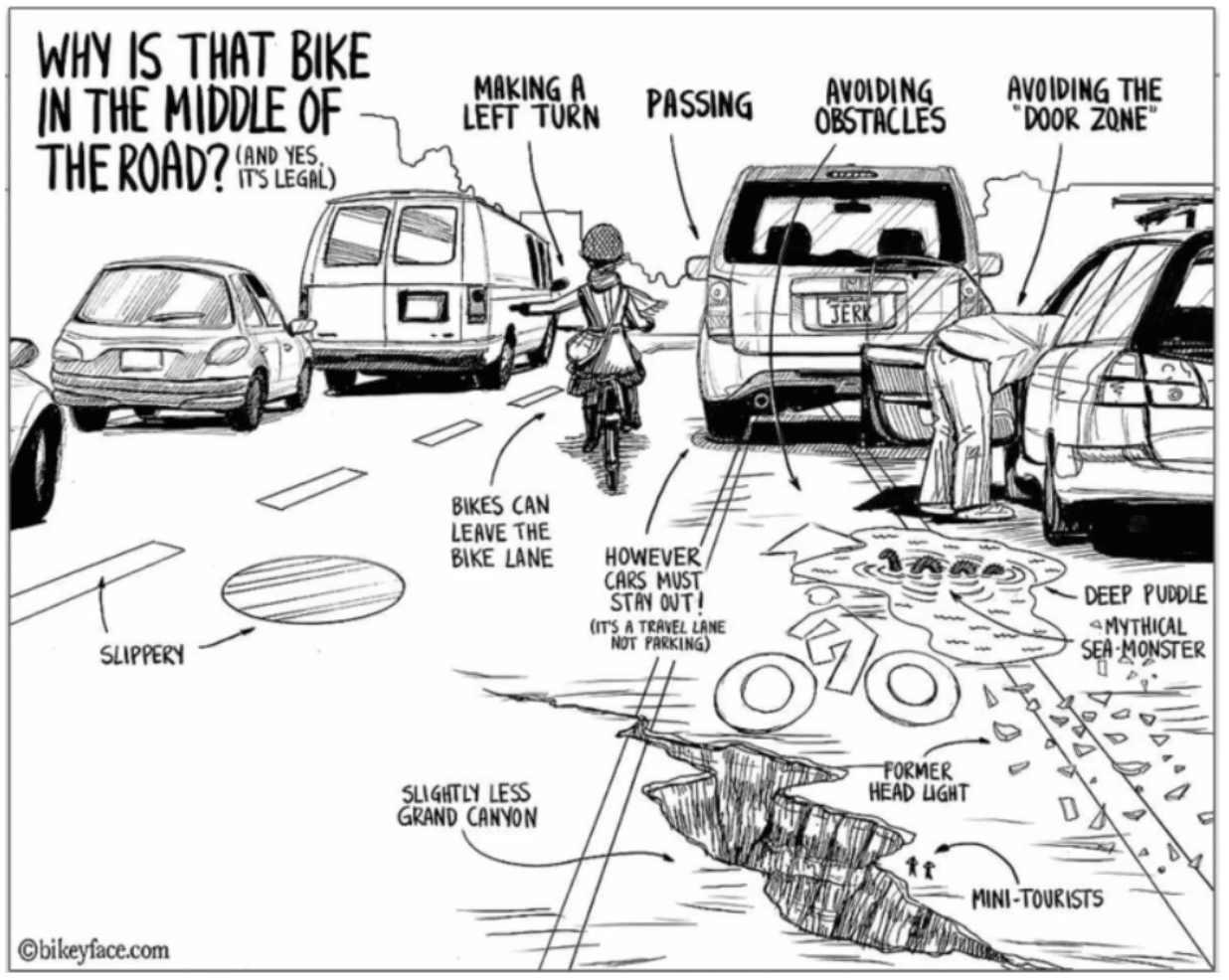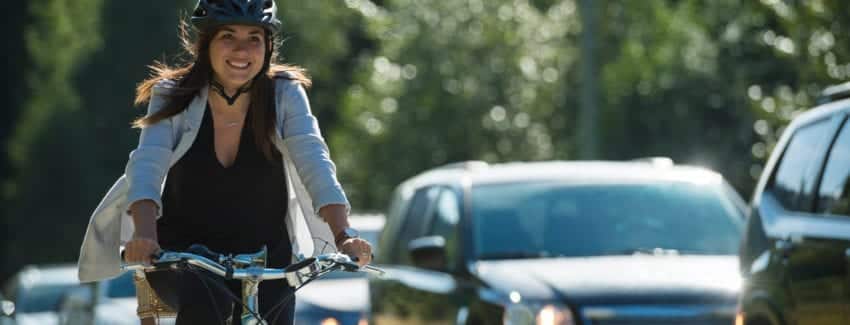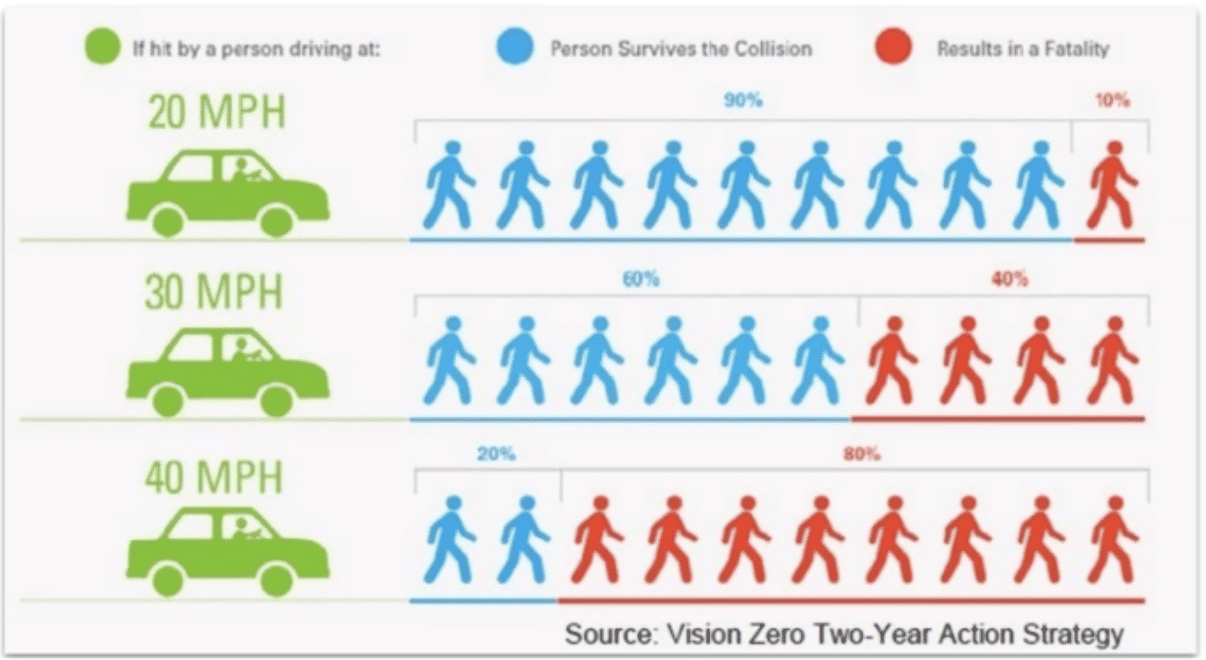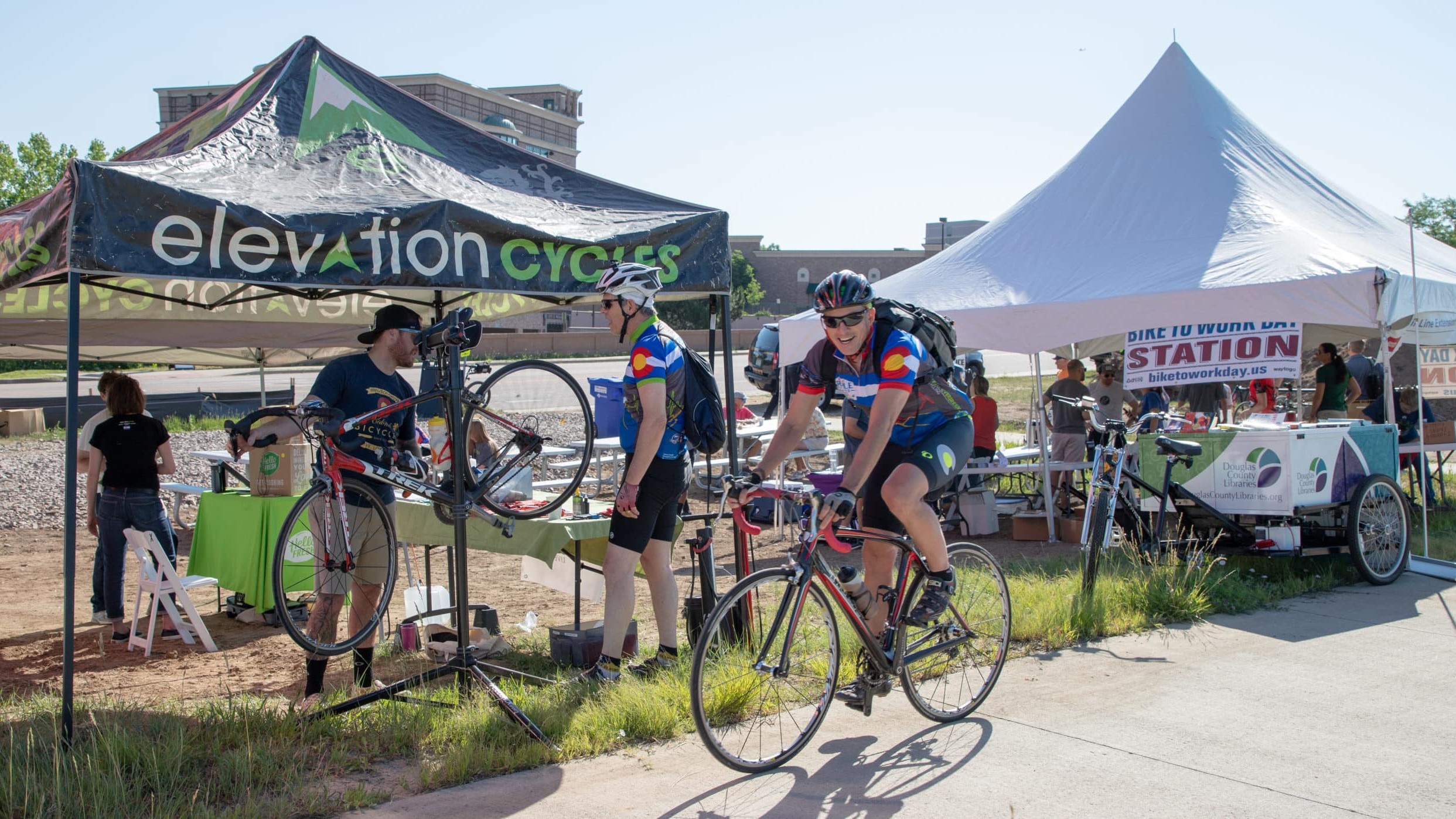May is National Bike Month. In honor of our mission to promote mobility in all its forms, Denver South, a Transportation Management Association (TMA), is looking at how motorists and cyclists can best interact on our roads safely and legally.
We are fortunate to live in Colorado. With “300 days sunshine”, four seasons, and an abundance of outdoor recreation like skiing, hiking, and cycling; it is no surprise residents and companies have relocated and now call Colorado home. This influx of people and jobs has increased regional vehicle-miles travelled (VMT) which, in recent years, led to unintended and sometimes deadly consequences. Colorado roads have become increasingly dangerous – especially for vulnerable users like cyclists and pedestrians, where death rates have more than doubled since 2010. In recent blogs, Denver South has also reported the increase of cycling, particularly during the Covid-19 pandemic. However, with more cyclists, pedestrians, and motorists on the roads come increased chances for someone to get hurt – or worse, killed.
I recently attended a Bicycle Friendly Driver course hosted by our friends at Bicycle Colorado. Let’s start with some key points they presented regarding bicyclist safety:
Motorists have a great responsibility when operating a vehicle on the road.
(Treat bicyclists as drivers of vehicles who have a right to the road, and who are also more vulnerable.)
Motorists arguably have the greatest responsibility on the road. Why? Because motorists possess the ability to cause the most damage. Cars, trucks, and SUVs are surrounded by metal, plastic, glass, and a list of safety features a mile long, including seat belts, crumple zones, and air bags, compared to a bicyclist who just has their clothing and a helmet. Therefore, taking care to pass cyclists carefully and practice safe driving at intersections is paramount to avoiding deadly crashes.
These may seem fairly obvious – but great reminders for us all on how cars and bikes can work together:
- Slow down, actively look and communicate.
- Pay special attention at intersections and driveways where a cyclist may be entering the flow of traffic.
- Be patient and cautious while passing bicyclists.
- Be aware of physical and environmental factors which endanger bicyclists (e.g. pot holes, parked vehicles, debris, glass) in the bike-lane/shoulder or the “door-zone.”
- Understand when and why bicyclists may “take the lane”. All road users can take action to avoid motorist/bicyclist crashes.
- All road users are people. Drive to protect lives and keep each other safe.
Understand when and why bicyclists may “take the lane”
What does taking the lane mean? In Colorado State Law, cyclists are required to ride as far right as safety allows. Cyclists may “take the lane”, aka ride in the middle of lane, if they feel the shoulder or the right side of the road is unsafe, are preparing to make a left turn, or are overtaking a slower-moving vehicle/cyclist.

So just what are some rules of the road regarding bicycle safety? Let’s brush up on some basic laws and etiquette when passing a cyclist:
- Give bicyclists at least three (3) feet – even when they are in the bike lane – where they have the right of way. (Note – this is a Colorado State Law)
- Motorists may legally cross the double yellow line to allow 3 feet. If there is oncoming traffic slow down and wait to pass until traffic clears.
- Allow extra room for mirrors, extended wheels, trailers, etc.
- Avoid honking as it might startle the bicyclist.
- Myth Buster: Cyclists can legally ride two abreast if they are not unduly impeding traffic.
In simplest terms – use your judgement and remember, speed kills. A road might have a speed limit of 35 – 45 mph, but those are maximums – if cyclists, pedestrians, construction zone or other hazards exist, drivers are advised to slow down.
At the end of the day, all road users are people. Cyclists, like drivers, have families, loved ones, pets and house plants who need and care for them. So, when seeing a cyclist on the road, we urge you to consider the worst that could happen if you try to pass the cyclist in an unsafe way. Conversely, consider the worst that could happen if you were patient, waited a few seconds, before passing safely.
Now that you know the basics of how to co-exist safely on our shared roads, why not dust off your bike and get out there and enjoy some of the wonderful things this state has to offer.
Links to further reading:



